Looking back on The Great War's effects on the brewing industry, a century after its end.
All About Beer Magazine - Volume 39, Issue 1
Editor's Note: This originally appeared in the last print edition of All About Beer Magazine. Due to the malfeasance of one of the owners of the magazine, I was not paid for this article (many others were left unpaid as well). I asked for it to be removed from their site.May 28, 2018 By Christopher Barnes

Two bullets. That's all it took to push the world over the edge.
Two bullets fired into the side of a sedan in Sarajevo killed Archduke Franz Ferdinand and his wife, Sophie, pushing an already tense Europe irretrievably into war. What became known as The Great War affected millions, touching the lives of nearly every man, woman and child in Europe. It also had profound effects on a number of industries, including brewing.
Before the war, there were more than 6,000 breweries spread across Belgium and France, with the majority of the French breweries located along the northern border with Belgium and Germany. World War I profoundly changed the face of brewing in Western Europe. Germany-backed Austria-Hungary's desire to punish the Serbs for the assassination drew Russia and France into the war to defend the Serbs. Germany's strategy involved a lightning-quick strike through neutral Belgium into northern France to capture Paris. Unfortunately for the Germans, the French and English halted their advance and created a brutal four-year stalemate that encamped millions of soldiers from both sides directly through the heart of Belgian and French brewing country.
War destroyed breweries and tore families apart. Brewers had their personnel drafted, their equipment confiscated and their futures imperiled or destroyed. Those breweries located away from the front endured rationing of ingredients and government-mandated controls designed to support the war efforts. Breweries near the front brewed beers to satisfy the tastes of the troops and give them some semblance of normality and a respite from life in the trenches. From Trappist monks to centuries-old family brewers to soldiers in the trenches, the war irrevocably affected everyone and everything it touched-including beer.
Invasion: Destruction and Survival
The Germans declared war on Aug. 3, 1914. A day later, five armies marched across neutral Belgium's border. The Germans obliterated the Belgian fortress at Namur using their high-powered artillery and marched the rest of the way into Belgium before swinging south into northern France. Eventually, the Entente forces of France and Britain pushed them back before the Germans could capture Paris. For the next four years, that line-which stretched 650 kilometers from the Belgian coast in West Flanders through northern France to the border of Switzerland-would be known as the Western Front. That line remained virtually unchanged until the summer of 1918. Over the intervening four years, the Western Front brutally ended the lives of millions of French, English, Belgians, Germans and other allied troops. Some died from disease, rifles, machine guns or poisoned gas, but most would die from heavy artillery fire. It's estimated that the Germans alone fired 222 million artillery rounds over the course of World War I. Production of all those rounds required a lot of raw materials, including copper and steel.
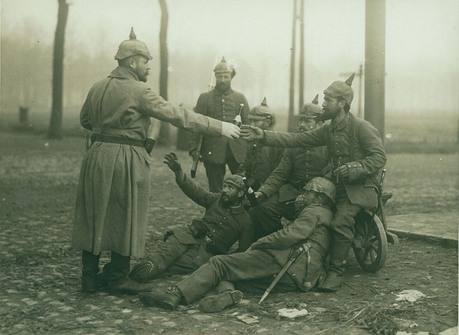
According to Pierre-André Dubois, the French retired brewer, beer historian and one-time travel companion to beer writer Michael Jackson, the Germans had a plan to help with resources.
"During the occupation of our region by the German army, an industrial spy agency was created in Munich by the 'Grand Quartier Général,' " says Dubois, reading through his own work. "The report published in 1916 concerning the breweries of Nord/Pas-de-Calais in the occupied zone ... lists 680 sites."
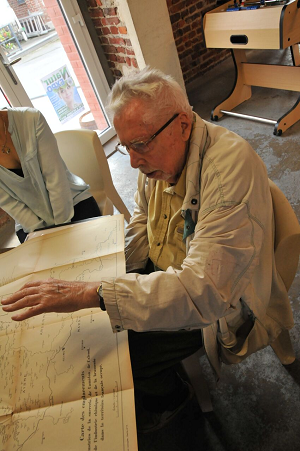
The Germans also designated which breweries (the most modern) were allowed to continue production to supply their troops. "Due to the wells and water heating equipment, the Germans converted other breweries into cavalry quarters, baths, laundries, dewatering stations and slaughterhouses." The rest were pillaged for materials that were shipped to German arms production plants.
The story was the same for breweries in occupied Belgium. Many brewers had their equipment ransacked by the occupiers, especially those who heeded the call from the Belgian government not to brew for the Germans. Paul Verhaeghe, then owner of Brouwerij Verhaeghe, maker of Duchesse de Bourgogne, was one of those brewers. In response, the Germans dismantled his brewery.
Other Belgian breweries were destroyed during the fighting. Karel Leroy of Leroy Breweries, whose family brewing history includes both Brouwerij Van Eecke, maker of Poperings Hommelbier, and Brouwerij Het Sas, maker of Sas Pils, recounted the fortune of each brewery.
"Brouwerij Sas was destroyed by retreating French and Belgian troops," says Leroy. "It was on the wrong side of the canal so it was burned down before the German troops could arrive."
The other side of the family, however, had much better fortune. Van Eecke was located in Watou, which was several kilometers west of Ypres and the front lines. Most of the brewery's beer was sold in Poperinge, which was a popular place for British troops to rest and relax in between stints at the front.
Van Eecke's neighbor, the Trappist abbey of St. Sixtus (Westvleteren), was forced to lay aside its quiet contemplations when its proximity to the front made it an ideal way station, first for French troops then later for British troops. From the fall of 1914 through the end of the war in 1918, thousands of troops were stationed at the abbey.
One of the monks, Brother Victor Van Staten, wrote in his journal of the cramped quarters at the abbey among the French troops in 1914.
"Powder cars, rifles in piles or standing against the wall, officers here, captains or sergeants there; buildings, attics, barns, cowshed, everything is full of soldiers," wrote Van Staten. "The brothers are almost unable to milk the cows; even the space between the cows is full."
Once the French moved out in the spring of 1915, the British forces took over the area surrounding the abbey. With the British, rules were strict, but there were far fewer soldiers billeted inside the abbey walls. Officers and their support staff were stationed inside, while the majority of troops were camped in the surrounding fields and woods. The monks did take advantage of the British love of beer.
"The beer in the cellar of the guest house is sold to the soldiers," wrote Van Staten in his journal. "We were doing good business, but the word came from the General that too much noise was being made and caused a disturbance in the big office which was above the cellar. So, they had to see where to move the canteen to now."
The monks of Westvleteren, the only Belgian abbey that wasn't occupied by the Germans, were the only Trappists able to brew throughout the war. The abbey and its monks, however, didn't make it out completely unscathed.
In 1917, six monks from St. Sixtus were conscripted into service as stretcher bearers and nurses. Brother Stanislas would never return, dying in September of 1918 from an unnamed disease. Likewise, 12 monks from Chimay, including the Abbot Anselme le Bail, were mobilized as chaplains and stretcher bearers. When the monks of Chimay returned home in the spring of 1919, only 10 had survived. Fathers Herbelin and Carlier were both killed in action.
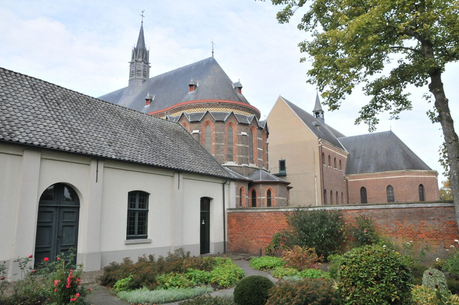
The other abbeys didn't get through the war completely intact. The monks of Westmalle and Achel were forced to flee to The Netherlands. The Belgians, in their defense of Antwerp, destroyed a tower at Westmalle to prevent it being used as an observation post by the approaching Germans. Achel was occupied by the Belgians and shelled by the Germans until they were able to solidify their hold on Belgium. To keep citizens from going back and forth over the border with The Netherlands, the Germans erected an electrified fence along the border. Since Achel straddles the border of The Netherlands and Belgium, the fence bisected the abbey's lands. When the call went out from the German War Department, the monks of Achel were able to sadly watch as their brewery was dismantled. No beer was brewed at Achel until 2001. The Germans also confiscated copper from Chimay, Westmalle and Rochefort.
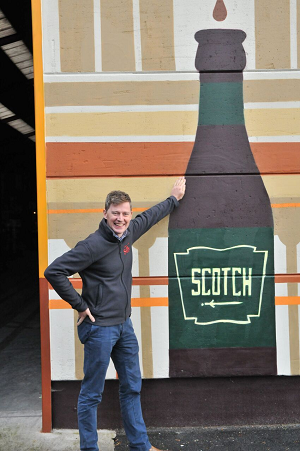
This was the biggest damage the Germans inflicted on the breweries of occupied Belgium and northern France. Every brewery that wasn't of use to the Germans was stripped of its valuable brewing equipment.
A few wily brewers, though, were able to fool the Germans. Lionel Van der Haegen, who owns Brasserie de Silly with his cousin Bertrand, describes how his great-grandfather, Adelin Mynsbrughen, saved the brewery's copper equipment.
"They came here to take all the copper," he says. "Here, in our brewery, my great-grandfather painted most of what was copper, his kettles and his tanks, he painted black so it looked like cast iron. He still had some few things in copper they took. Also, our brewhouse, we have two copper tanks; they were behind walls. So you could see a little bit of copper on top of it, but behind the walls you couldn't see it."
Similarly, Timmermans protected its giant copper coolship by painting it red and claiming it was cast iron and undesirable.
Even if a brewery managed to keep its equipment, times were extremely difficult. Food was scarce and ingredients were often confiscated by the occupiers or their own governments to feed the war efforts. Those breweries that were allowed grain supplies, particularly in occupied France, were required to send the beer to rail stations where it could be distributed to the German soldiers near the front. Beer was hard to come by for civilians. People brewed, mostly illicitly, a kombuchalike drink made from water, yeast, ash leaves and the pulp of processed sugar beets. Another version was brewed with molasses and dandelion leaves, according to Pierre-André Dubois.
Even in unoccupied areas, breweries suffered through war rationing and a lack of basic ingredients. Some breweries situated near British troops, however, managed to do reasonably well.
"The English were especially big beer drinkers," says Dubois. "Their presence created a strong demand that the brewers had trouble satisfying. They were subject to the war economy. Men and horses were at the front. Because of a lack of fertilizer, agricultural yields were down sharply. Wheat production for bread and oat production for livestock and horses is prioritized, while the main barley and hop growing region was [...] in the occupied territory."
Reconstruction: New Breweries and New Beers
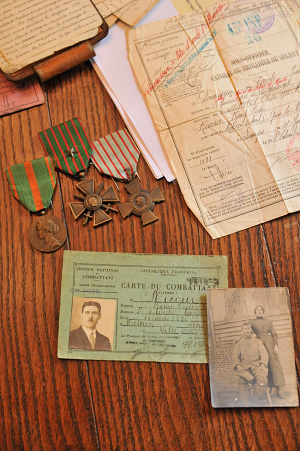
As the tide of war began to turn (thanks in part to the United States joining the war against the Germans), Allied troops liberated the occupied lands of France and Belgium throughout mid- to late 1918. In the unoccupied territories near the front and the newly liberated areas, the interaction with beer-loving British troops introduced new styles into the brewing lexicon of northern France and Belgium. Stouts, bitters and Scotch ales sprang up to satisfy the needs of the allied troops. In some cases, the troops went quite far to get a taste of home. Brasserie de Silly is most famed for its Scotch de Silly, which was created at the end of WWI to satisfy the thirst of a Scottish regiment stationed in the area.
"At the end of the war, they came by asking for a Scotch beer like they had back home," recalls Lionel van der Haegen. "Here, this style is unknown. They asked my great-grandfather, Adelin, to make a Scottish ale. He said, 'I don't know how to make this style of beer, and I don't have enough raw materials to even make my own beers. And I don't have the raw materials to make this type of beer. No, not possible.' They insisted, and he finally said yes because the soldiers brought some malts and hops from England and gave it to my great-grandfather. One of the Scottish soldiers was a brewer before the war. He started working at the brewery. Jack Peyne [the Scottish brewer] ended up staying, marrying and living in the area. He worked at the brewery until he retired. His descendants still live here."
With the war's end, Jack wasn't the only soldier to leave the army for brewing. Rémy Victor Ricour served France during the war, was captured by the Germans in 1917, and escaped in 1918 before the end of the war. He used his soldier's and prisoner's pensions, along with loans from his family, to purchase Brasserie Saint-Sylvestre from his great-uncle. Located well behind the front, the brewery had been spared the ravages of war. Today, his great-grandson Pierre Marchica owns the brewery, which produces the famed 3 Monts Flanders Golden Ale.
Many produced beers to honor victory and liberation. The Moortgat family's renowned Duvel started its life as "Victory Ale" and is brewed with a yeast strain that traces its history to Scotland. Omer Vander Ghinste named his new post-war creation "Biere des Jacobins," now known as Cuvée des Jacobins, after Rue des Jacobins in Paris where he lived after he'd fled the German invasion.
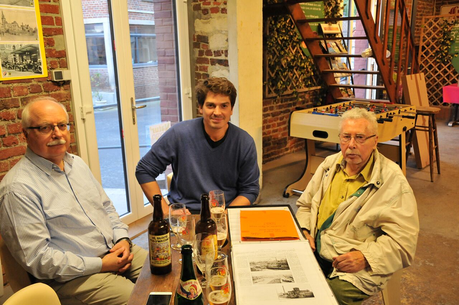
Brewers continue to dedicate beers to The Great War. The Dhaussy family have been brewing in the French countryside near Cambrai for generations. After a hiatus in the '50s and '60s, Alfonse Dhaussy purchased Bourgeois-Lecerf Brewery in 1977. Today, it is known as Brasserie La Choulette and is run by his son Alain and his grandson Moïse Dhaussy. On a system installed with war reparation money, they've brewed a blond ale called "Battle of Cambrai" dedicated to the British troops and the famed battle that saw the first large-scale use of the newest weapon of war: the tank.
Similarly, Van Honsebrouck of Izegem, Belgium, brewer of the Kasteel and St. Louis brands, created a beer dedicated to one of the major local battles in West Flanders. Passchendaele was created by the brewery in cooperation with Eric Deprez, a tour guide at Van Honsebrouck and a retired special forces member of the Belgian army. Deprez is also an amateur historian who leads tours of World War I sites, including the battlefield at Passchendaele. Part of the proceeds from the blond ale of the same name support local organizations commemorating the battle and its history.
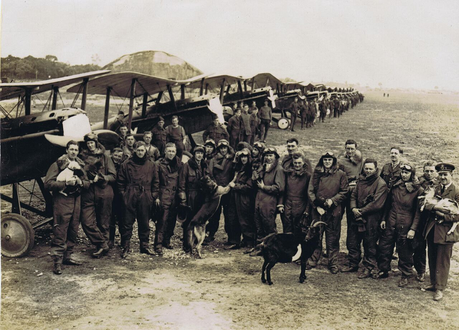
Germany surrendered and signed the armistice ending The Great War on Nov. 11, 1918. Rebuilding began and reparations were paid, though many breweries in both Belgium and France never reopened for a wide variety of reasons. In some cases, the brewers died fighting. In other instances, particularly with the rural breweries, families chose to take their reparation money and focus on farming. Some brewers chose to pool their reparations with others to build larger and more modern breweries. And in some cases, families rebuilt cheaply, brewed a few batches to claim their reparations, and then sold off the equipment and kept the remaining money.
World War I devastated the brewing industry in Belgium and France. Of the 2,419 breweries in northern France before the war, only 1,371 remained in business by the mid-1920s, according to an article by Dubois. In Belgium, 2,109 of the pre-war 3,214 breweries were still open, as noted in Jef Van den Steen's book, Trappist: The Seven Magnificent Beers.
In the shadow of 40 million casualties, beer seems a small and trivial thing. Yet for those in occupied areas or on the front lines, it was a welcome luxury and a reminder of better times.

